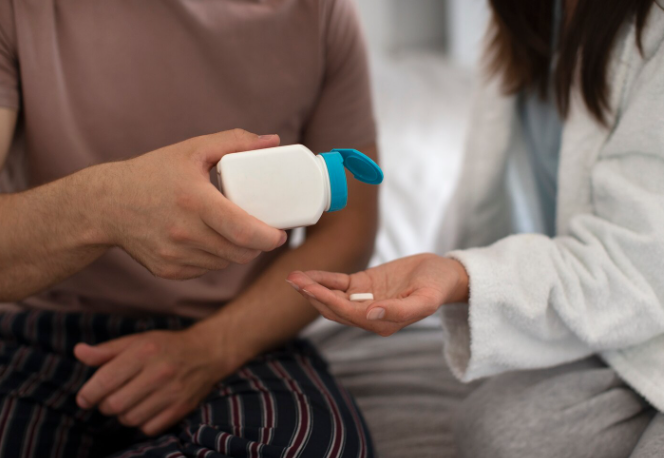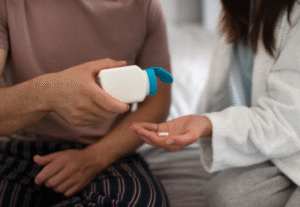
When was the last time you saw an ad about safe sex that didn’t make people uncomfortable? Probably never. But discomfort shouldn’t stop us from learning what really matters. And that’s why learning about safe sex practices is so important.
Sexual health is something that is part of general well-being, even though we do not discuss it openly most of the time. But the number of infections that can be avoided is high: Over one million curable sexually transmitted infections are contracted worldwide on a daily basis. Practising simple safe sex practices can turn those numbers down to a large extent.
In 2026, the “Western idea” is no longer exclusive to young couples. It’s for anyone who values their health. In this article, we’ll unpack the best protection methods, testing habits, and real-world tips that every Indian reader can actually use.
TL;DR
- Ever noticed how everyone avoids the topic of sex, yet everyone’s curious about it? It’s time to talk about it, safely and openly.
- Discover the six safe sex practices that every couple should know about.
- We’ll also bust a few classic myths that have been passed down for generations (and really need to go!).
- You might just surprise yourself by how open and comfortable you feel about discussing sex once you reach the end. Awareness has that quiet power, doesn’t it?
Safe Sex and Pleasure: Can They Coexist?
Many people quietly assume that safety kills spontaneity or that condoms dull pleasure. The truth is, safe sex can be deeply satisfying, often more so, because it comes with peace of mind.
Anxiety about pregnancy or infection can make people hesitant or distracted. However, when protection is part of the moment, both partners can relax and focus on connection. Pleasure also grows when there’s trust, communication, and mutual consent.
Talking about what feels good, setting boundaries, and choosing contraception together can make intimacy more open and enjoyable. Simple steps like using lubricants with condoms or exploring different textures can heighten sensation while staying safe.
Safe sex is not the opposite of pleasure. It’s what allows pleasure to exist without fear. When partners feel both secure and respected, intimacy becomes freer, deeper, and genuinely fulfilling.
Six Must-Follow Safe Sex Practices for Every Couple
Amid myths, half-cooked suggestions and social taboos, it is easy to forget what safe sex is. However, it only takes a handful of habits that are simple and science-proven in order to keep you far safer than you imagine. Let’s go through six must-follow safe sex practices that truly matter.
1. Always Use Protection
The most basic but efficient barrier against sexually transmitted infections (STIs) is still the use of condoms. Both male and female condoms prevent the exchange of bodily fluids, drastically reducing the risk of HIV, syphilis, gonorrhoea, and other infections.
The best part? They are cheap and can be found in most Indian pharmacies and even online. All you need to do is remember to check the expiry date and keep them out of the sun or heat as much as you can.
2. Get Tested Regularly
You and your partner may be completely healthy, and you know a lot of STIs do not present themselves in the early stages. Conducting regular check-ups at least once every year or more frequently in case you have more than one partner will help in detecting infections before they are transmitted.
In India, discreet and affordable sexual health testing is now available in most urban diagnostic laboratories. So you can afford to give your wellness the priority it deserves without any form of stigma.
3. Communicate Openly with Your Partner
Please have a talk about safety before sexual activity with your partner. It does not need to be one-sided, serious, or scripted; just say what feels comfortable, and the other person will add to the discussion. These tiny things help create a culture of understanding and integrity over time.
Decide on preferred contraceptive methods and revisit later, as comfort builds with discussion. Remember, protecting your health starts with a single honest talk.
4. Avoid Alcohol Or Drugs Before Sex
It might sound casual to “set the mood” with a few drinks, but alcohol and drugs blur judgment, making it harder to use protection properly or even remember consent boundaries. A lot of STD infections occur due to poor decision-making in such cases.
Being sober means you know you are comfortable and you are actually consenting, and this is what safe sex is all about.
AI Tools gut health Javascript Machine Learning mental health News PHP physical health python WordPress Blog
5. Be Smart About Contraception
For most of us, contraception equals condoms, and that’s where the learning stops. Nonetheless, the number of options available is many, including pills, IUDs, and emergency measures. All of these possibilities suit a particular situation.
The awareness of such choices gives you the ability to be in charge of your well-being and family planning. Talking to a reliable gynaecologist is always a good idea to get to know what fits you and not necessarily what you have heard or seen on the internet about it.
6. Prioritise Hygiene
The silent hero of sexual health is hygiene. Washing before and after intimacy, choosing cotton underwear, and keeping private areas clean reduce the risk of infections to a great extent. Women are advised not to use scented washes and douches, and men are advised not to forget to clean under the foreskin properly.
The last but not least habit is urinating after sex, particularly among women, which prevents UTIs. These practices will ensure that intimacy remains safer and much more comfortable.
Awareness is the first step in safe sex, and it should begin at an early age. You, as a parent or a soon-to-be parent, will be glad you read our post on Sex Education for Teenagers: A Guide to Parents. It is all about getting you to talk to teens freely and without fear.
5 Busting Myths Around Safe Sex Practices

For something as important as safe sex, it’s surprising how much of what we believe isn’t based on truth at all. Such myths may be misleading, even dangerous. Let’s bust them and see what’s really worth following.
1. Myth: “Protection is optional once trust exists”
Many people assume that being loyal equals being safe, but health doesn’t always follow emotional logic. STIs can remain undetected for long periods or may have been acquired before the relationship began. Open communication, regular tests, and protection are ways of saying, “I care about our future together,” not “I don’t trust you.”
2. Myth: “Oral sex is completely safe”
If you’ve ever thought, “Oral sex doesn’t really need protection,” you’re not alone, but it’s also not true. Infections like herpes, gonorrhoea, and HPV can spread even through oral contact.
Research finds that the risk of catching an STI this way ranges from 10.2 to 20.1 per cent, depending on your partner’s symptoms. Barriers such as dental dams and condoms can be used to protect yourself and your partner during oral sex.
3. Myth: “Natural or withdrawal methods are enough”
In India, traditional methods like withdrawal are sometimes trusted over modern contraception when it comes to conceiving. While they may reduce risk slightly, they are far less effective than condoms or other contraceptive methods, and they do not protect against infections at all.
Knowledge and reliable protection are crucial. In fact, the pull-out method still doesn’t prevent pregnancy 100% of the time.
4. Myth: “I can’t get pregnant or infected during my period”
Periods might feel like a “safe window”, but that’s not entirely true. Sperm may take up to five days to leave, and ovulation may occur at any given time. One can get pregnant, and STDs such as HIV and chlamydia do not pause. Confiding in condoms or other protection during the menstruation period is a considerate way of being safe and stress-free.
For young women managing irregular cycles, exploring insights on PCOS treatment and reproductive health can help make safer choices.
5. Myth: “STDs always show up with clear symptoms”
You may assume your body will provide advance notice. As a matter of fact, bacterial vaginosis, gonorrhoea, or hepatitis C, among other STDs, are long, silent players. You could look perfectly healthy and have an infection. So, do not wait to see the red flag that may not appear.
The easiest solutions are regular testing and regular protection, which keep you genuinely worry-free. Busting such myths is merely one part of self-care, but actual wellness is much more.
Wondering how being healthy today works out? It is worth reading an informative blog on the Importance of Health and Wellness in 2025.
Final Thoughts
Love, in India, has been sung, written and experienced with passion. But true love also implies care, care about well-being, decisions and esteem. Safe sex practices are the quiet part of love that we rarely speak of, yet they define its maturity.
So, maybe it’s time to look at love without the movie filters. What’s one thing you wish every romantic film showed more honestly: Care, consent, or conversations? Share your thoughts below!
FAQs
Safe sex methods such as condoms and dental dams significantly reduce the risk of STIs. However, no method, except abstinence, is 100% foolproof. Some infections, like herpes or HPV, can spread through skin-to-skin contact even when protection is used. Regular testing and open conversations with partners remain key to complete prevention.
No. Condoms are designed for single use only. Washing or reusing one weakens the latex or polyurethane, increasing the chance of breakage or leakage. Always use a new condom every time, and check the packaging for any visible damage or expiry date.
Not always. Oil-based lubricants (like coconut oil or petroleum jelly) damage latex condoms and make them prone to tearing. For latex condoms, water-based or silicone-based lubricants are the safest choice. Polyurethane condoms, however, can handle both water- and oil-based types safely.
No condom offers complete protection. When used correctly, latex and polyurethane condoms are about 98% effective in preventing pregnancy and most STIs, including HIV. In real-world use, the effectiveness drops slightly because of human error, like incorrect application or late usage.
Condoms made of natural or lambskin can prevent pregnancy, but do not protect against infections because they have tiny pores that viruses can pass through.
For maximum safety:
Always use a new condom each time.
Check the expiry date and seal before use.
Store them in a cool, dry place away from sunlight.
Pairing condoms with other contraceptive methods (like birth control pills) adds extra assurance.
Safe sex is about smart, consistent habits—no product works perfectly without proper use.
For maximum safety:
-Always use a new condom each time.
-Check the expiry date and seal before use.
-Store them in a cool, dry place away from sunlight.
-Pairing condoms with other contraceptive methods (like birth control pills) adds extra assurance.
- About Us
- Blog
- Contact Us
- Cookie Policy
- FAQs
- Privacy Policy
- Sign Up for Newsletter
- Terms and Conditions of Use







